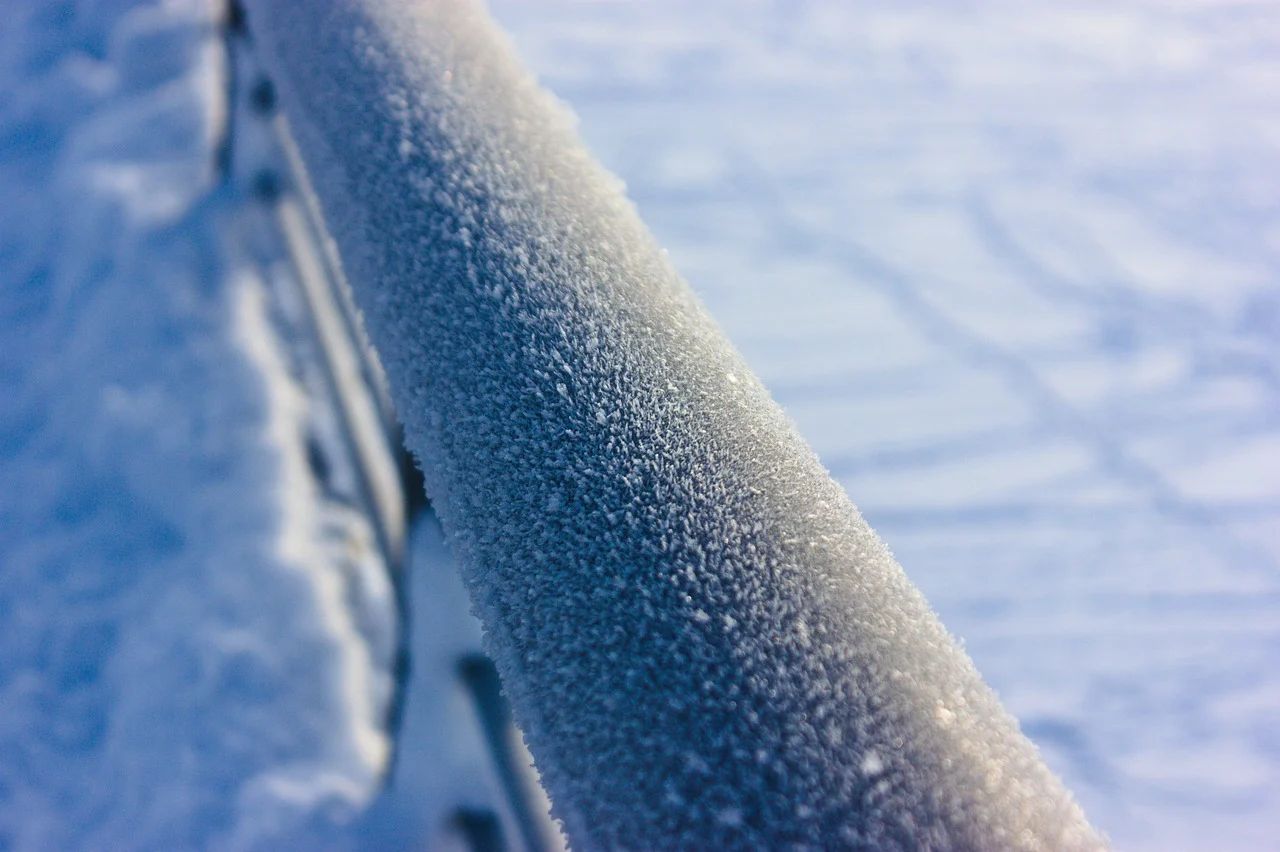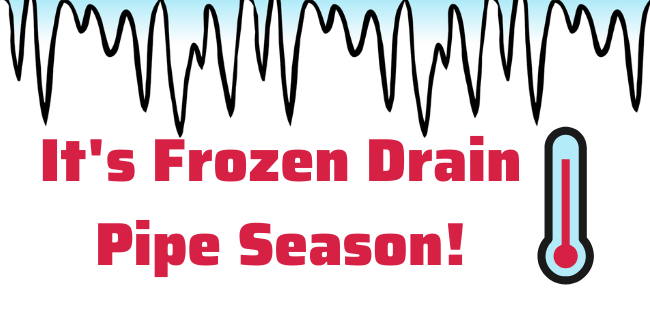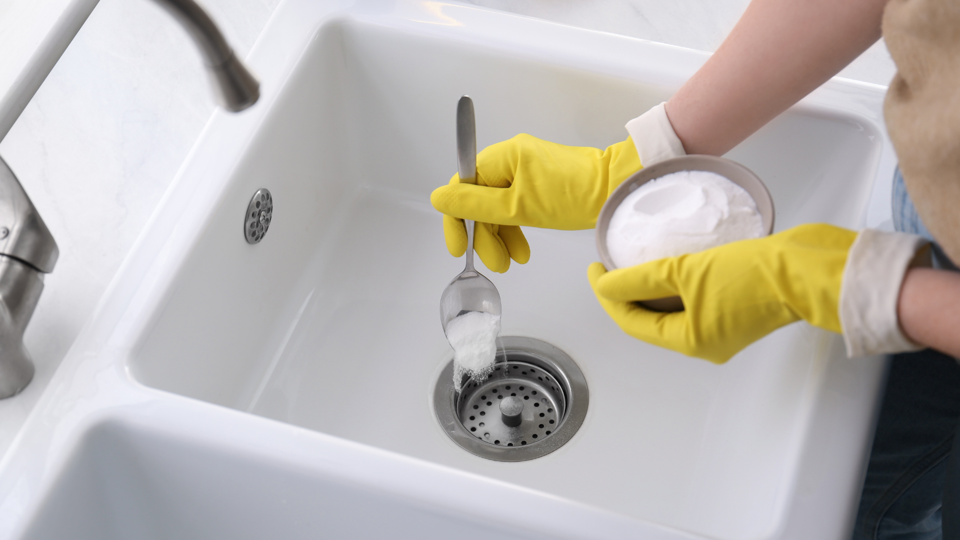Chances are, it’s probably cold outside where you are during the winter months. When temperatures begin to dip into the frigid range for an extended period of time, one of the first worries that can creep into your mind is the threat of frozen pipes. It’s not uncommon to deal with it for the majority of the winter if you live in the arctic-like conditions of Maine or Minnesota but it can happen to anyone, anywhere, at any time, if the temperature slips below freezing.
When it comes to frozen pipes, most people think of pipe bursts, flooding and the problems associated with water lines – but not us, we’re always focused on drain lines. Frozen drain pipes might not happen quite as frequently as those related to water lines but you can still be left with a major mess on your hands. Before we talk about frozen drain pipes, we should clear up one thing – frozen drain pipes cannot really burst. Sure, maybe it’s happened once or twice in some bizarre situations but for the most part, frozen drain pipes won’t suffer the same fate as water lines. That’s most likely thanks to the drain pipe’s thicker material, usually of cast iron or PVC.
What Exactly Causes Drain Pipes To Freeze?
It’s no big mystery that frozen pipes are caused by cold weather, when the temperature dips below 32 degrees for a substantial stretch, but there’s usually another reason involved. That reason is most commonly poor insulation. Drain pipes are insulated for protection, as well as to make sure the pipe – and the flowing wastewater – remains at a reasonable temperature. It’s not unusual for drain pipes to be poorly insulated – or to contain no insulation! In fact, it's really not something on the forefront of contractors’ minds, sometimes skimping on it all together.
It could also be a lack of insulation in your home surrounding the drain pipe’s exit points. Any wastewater sitting in the drain pipe of these poorly insulated pipes and areas could freeze.

When exposed to the elements, a poorly insulated drain pipe is more susceptible to freezing. As the pipe freezes, the diameter of it significantly reduces, making it more susceptible to clogging, with a chunk of frozen waste. Drain pipes that are in your basement or at least three feet underground are unlikely to freeze because of the ambient heat from your home and the soil. However, if there’s a water level or pitch – the slope of the pipe – problem associated with it and the drain pipe is not entirely below frost level, a water-collecting sag or belly could freeze.
How Do I Know If My Drain Pipes Are Frozen?
Noticing a frozen drain pipe can be challenging, because there aren’t usually many noticeable signals. There’s not typically the warnings you’d see from a water line, such as frost build up and bulging pipes. If a clog forms in the drain pipe and begins to freeze the blocked water, it will present many of the same signs of a typical clog, such as a smell coming from sink drains.
Other than that, the best way to know for certain is to check the drain pipe from the inside.
Since checking a drain pipe from the inside is the best way to determine if it’s frozen, you’re going to need a professional to better assess the situation – that’s where we come in! A video inspection will definitely show if the drain pipe is frozen and if there’s a significant frozen build up. If that is the case, we can unfreeze your drain pipe with an arctic blaster, a small piece of equipment that creates super hot, dry steam in just minutes, which is then snaked to the area.
What Are Potential Solutions For Frozen Drain Pipes?
Like most drain and sewer issues, being proactive can eliminate a majority of problems. Routine video inspections can ensure your drain pipes remain clear of debris and a video inspection when the frigid weather rears its head could go a long way in determining if the cold weather is significantly impacting your pipes and if there’s any water sitting in there that could freeze. Think of your pipes like your body and how you need to go to the doctor for checkups regularly, getting an annual drain cleaning and checkup can make sure there’s not a much bigger mess later.
In addition, while a professional is on-site, checking the depth of the drain pipe line and the condition of the sewer lines is also beneficial.
There’s a couple of things you never want to do, however. Never take an open flame to the drain pipe – you run the risk of starting a fire or causing significant damage to the pipe. Don’t dump any chemical drain cleaners down either, as it likely won’t make it through the frozen blockage and it will just sit in the pipe. The acid from it could start to corrode over a short time. If you want to take some boiling hot water and dump that down, it could potentially help a minor problem.
Frozen drain pipes can freeze at any time during cold weather. But don’t worry, Zoom Drain will be there quickly to solve your problems, no matter what time of day – and there’s no charge for us to assess the situation. Don’t wait, give us a call or schedule an appointment online now!






.0000000000000.png)